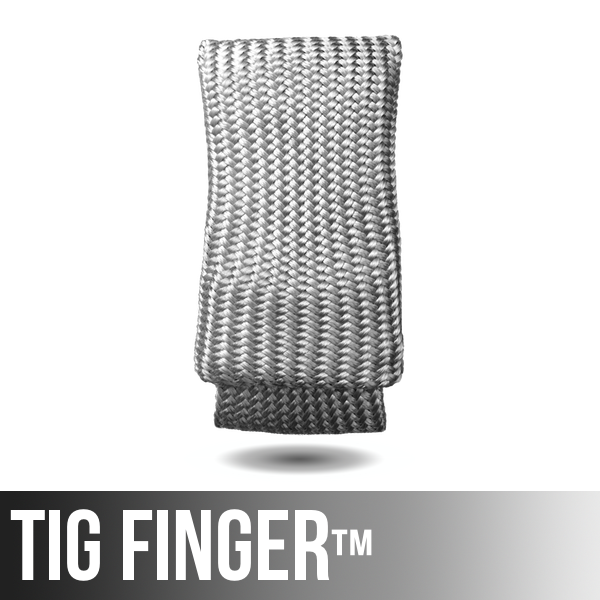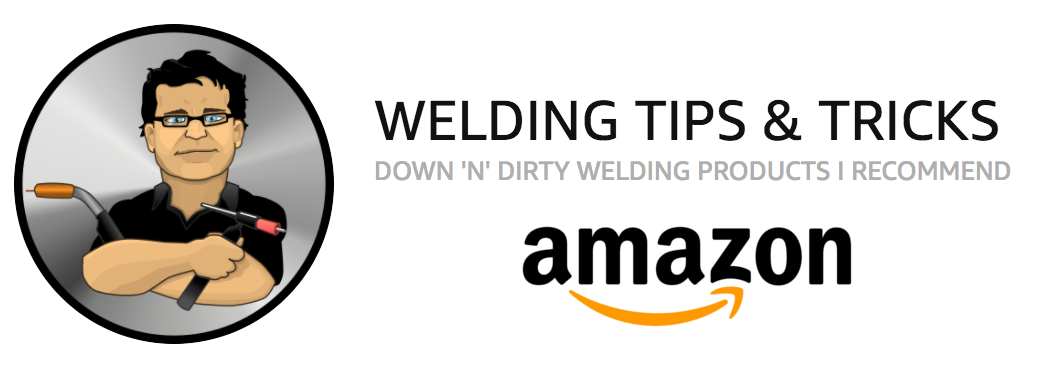Video Transcript
TIG Welding Offset Sockets with Hastelloy W 4140
Hey, Jodi here with weldingtipsandtricks.com. I’ve got a little quick job for a customer today. I’ve got to do five parts, little small parts, welding 4140 steel to an off the shelf socket, 12-point socket. Now, I know the 4140 side of it, but I don’t really know the exact material type these sockets are made out of. Is it a chrome vanadium steel? Is it some other type of high strength, low alloy steel? It’s something like that, but I don’t know exactly what it is. What filler rod do you use when you encounter that? Fortunately, there are som filler rods out there that are really good for dissimilar metals, where you don’t have to know exactly what you’re welding on.
Now, a little disclaimer here. If it’s a critical job, you’ve got to know the material type of what you’re welding on, but this is a little hand tool with a 1/4 inch drive. You can only get so much crank on a 1/4 inch drive, and so I think it will be just fine. Now, what filler rod would you weld that with? I’m just going to be drawing on experience here, because I don’t know of any filler metal chart that tells me what filler rod to weld 4140 to an unknown socket. I don’t know of a chart like that. I used to work in a weld shop that welded aircraft parts. Right next door was the engine shop where they assembled engines and broke them down, and at least a couple times a week a mechanic would come through with a box end wrench in one hand and something else in the other, and ask if you could modify this wrench, or put an offset in it, shorten it up, weld a socket to a box end wrench, or weld a piece 17-4 roundstock to a socket, any number of things. We were combining 4140, 17-4, whatever the socket was made out of, whatever the box end wrench was made out of, and we always used Hastelloy W and it always worked.
I have a sheet of 1/4 inch thick aluminum plate that I kind of keep around for little jobs like this. I just find that it helps. The machinist was kind enough to index the pieces here so I can locate those split sockets really easily. First thing I’m going to do is clean them up, though. I want to get that black coating off where the weld goes, give them a wipe down, make everything go a little bit better. I’m just going to hold them and get one tack on them, just using a little third hand type tool. After I get the one tack, then I’ll put them in a vice. That one will keep them from moving around, and then when I … Well, you’ll see in just a minute. Just one little small tack with a little bit of filler metal.
Then what I’ll do is I found this little step piece here. I save lots of little blocks like this of scrap aluminum, and this just happened to be just the right dimension. I can use it for a spacer, and then clamp it down tight, and then the piece will have to be pretty straight. I’ll get one more tack on there. I’ll go through them all and then put the other end on, just like this. Clamp down and the little machinist … Not a machinist, just a cheap drill vice, actually. You can pick these up all day long for $20.00 – $25.00. Any big box store, any Harbor Freight. Very handy for bench top work for welding small parts like this.
I’ve got them all tacked up. I’m going to use that aluminum block while I weld them up. I’m going to hold them like this, and it’s going to really help pull some heat out of it, that steel. On a small piece like this, if you’re not careful, you can build up some heat, build up too much heat, actually. Really, you can only go about three or four dips before you have to stop, because your torch angle get out of whack, and that’s kind of not a bad thing, any way, because if you don’t stop pretty often and let it cool off, you can build up too much heat.
I’m using a 1/16 diameter, that’s 1.6 millimeter diameter electrode, and that’s the same diameter as the rod, actually. I’m using a Number Eight cup with about probably 15 CFH, maybe 20 CFH of argon. Again, I’m using the Hastelloy W rod, that’s AMS5786. If I didn’t have any Hastelloy W around, and I do, I have quite a few pounds of it. I just got lucky and was able to buy some at a scrapyard, I would probably choose 309. It’s about a tenth of the cost, and probably just about as good for a job like this, but I’ve done so many of these with Hastelloy W it’s hard for me to try to choose anything else, because I never had any problem welding little tools like this using the Hastelloy.
That just about wraps it up for those. Those are five pieces done, and they came out okay. I found this extra socket that was with the bag, and so I also found this little breaker bar, 1/4 inch breaker bar that says chrome vanadium on it. Put a magnet on it. It’s very magnetic. Makes sense. But I also found this piece of roundstock here, and it’s some kind of unknown stainless. I suspect it’s 303 free machining stainless, because it came from a machine shop and they do a lot of 303. I also found this piece of 4140 heat treated little block there, so I’m going to go ahead and weld this to this scrap piece.
We’re going to do a little testing on it. It will become clear what I’m going to do as I go here. This will only take a minute. I’ve got things sped up here quite a bit. You already watched welding of these things. All right, welding now the piece of unknown stainless to the chrome vanadium piece, and after everything cools down I’m going to apply some stress here. I’ve got unknown stainless welded to the chrome vanadium steel little breaker bar. I’ve got 4140 heat treated welded to the socket. I’m going to put a little crank on it here. That is exactly what I wanted to see.
That does it for this week. Thanks for watching. See you next time.







April 25, 2017 at 1:24 PM
Hello Jody, Have you used WELD MOLD-880 rod? I understand it is also a maintenance type rod.